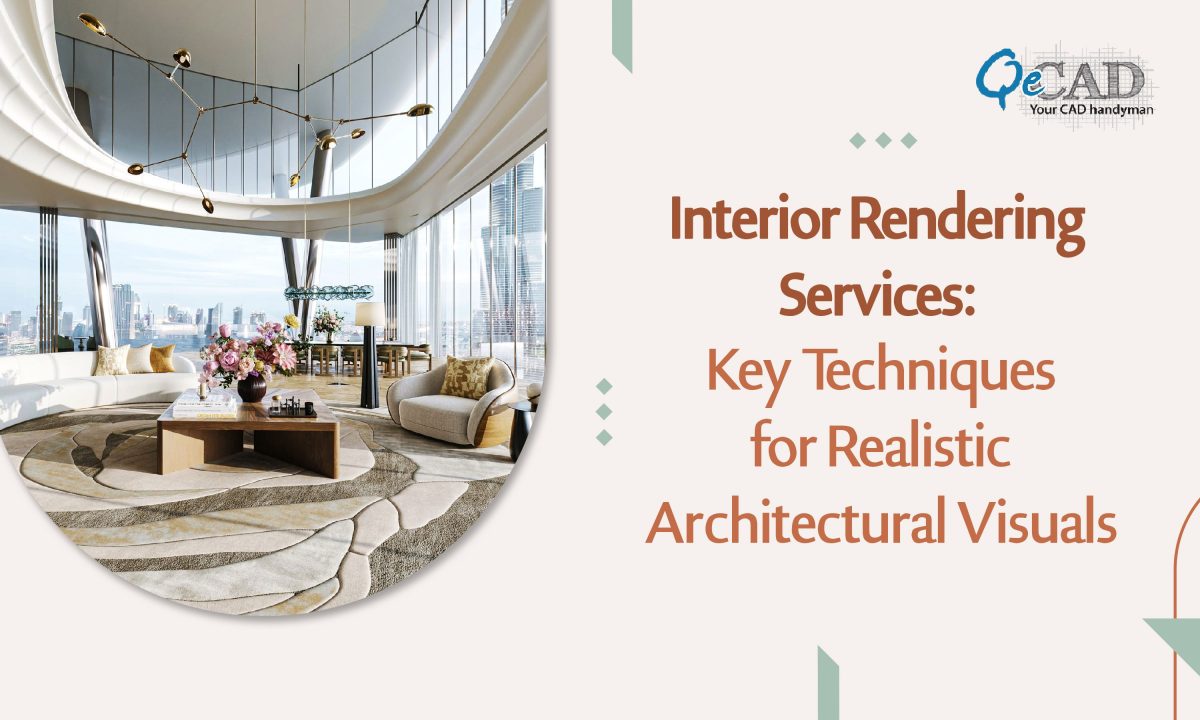
01 Apr 2025
By : dolly / Comments 0
Interior Rendering Services: Key Techniques for Realistic Architectural Visuals
Interior Rendering Services plays a crucial role in architectural visualization bringing the design concepts to life with the realistic and immersive visuals. Whether you’re a 3D artist, an architect or an interior designer, creating the high-quality renders can help your clients to visualize the space effectively and make the informed decisions.
Here’s a guide to creating the stunning interior renders that stands out.
1. Understand the Project and Define the Objective
Before starting any rendering project, it’s essential to gain clarity on the purpose and intended audience. Is the render meant for the real estate marketing, client presentations or a design competition? The objective will define the required level of detail, style and also the mood of the visualization.
2. Use High-Quality 3D Modeling
A successful render starts with a well-crafted 3D model. Make sure that the furnitures, fixtures as well as the architectural elements are modeled accurately keeping all the proportions in mind. Use the optimized geometry to maintain the performance without compromising on any of the detail.
3. Select the Right Materials and Textures
Realistic materials and textures can make or break an interior render. Use high-resolution textures and also apply appropriate reflections, bump maps along with the displacement maps to achieve a lifelike look. Pay attention to the material properties like glossiness, roughness and even the transparency.
4. Master Lighting Techniques
Lighting is considered to be a key factor in creating the realism. Utilize the natural lighting through the windows and artificial lighting through the lamps as well as the downlights to balance the ambiance. Do adjust the shadows and even the highlights to enhance the depth and realism of your render. The tools like HDRI maps as well as the Global Illumination can help you to achieve the natural-looking lighting conditions.
5. Focus on Composition and Camera Angles
A well-composed render guides the viewer’s eye through the space effectively. Do follow the rule of thirds, the leading lines as well as choose the dynamic perspectives to highlight the key design elements. Experiment with different focal lengths to add the drama as well as the realism.
6. Enhance with Post-Processing
Post-production is an essential step in refining the final render. Adjust colours, contrast, brightness and sharpness with tools like Adobe Photoshop or Lightroom for a polished finish. Do add minor details such as light flares, depth of fields as well as the ambient occlusions to elevate the visual appeal of your renders.
7. Pay Attention to Detailing and Styling
By adding small details like books, plants, rugs as well as the decorative elements can make the renders feel more lived-in and relatable. Avoid any of the empty or overly sterile look by incorporating the realistic imperfections and even the clutter to enhance the authenticity.
8. Optimize Rendering Settings for Quality and Speed
Balancing the quality and rendering time is crucial. Use render engines like V-Ray, Corona or Unreal Engine and fine-tune the settings like resolution, anti-aliasing as well as the sampling to achieve the high-quality results without any unnecessary delays.
9. Stay Updated with Industry Trends
Interior rendering techniques are evolving with the new technologies like the AI-driven renderings, real-time renderings as well as the VR integrations. By staying up to date with the latest trends makes sure that your renders remain competitive and innovative at the same time.
Conclusion
Creating an impactful interior renders requires a combination of the technical skills, an artistic vision along with the attention to the detail. By focusing on the quality modeling, realistic materials, effective lightings as well as the post-processings, you can create the compelling visuals that leave a lasting impression.
Whether you want to showcase a luxury residence, a commercial space or even a conceptual design, mastering these techniques paired with the top-notch 3D Rendering Services will elevate your architectural visualization projects to the newer heights.

